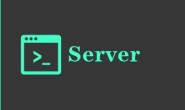Kotlin 条件控制
IF 表达式
一个 if 语句包含一个布尔表达式和一条或多条语句。
// 传统用法
var max = a
if (a < b) max = b
// 使用 else
var max: Int
if (a > b) {
max = a
} else {
max = b
}
// 作为表达式
val max = if (a > b) a else b
我们也可以把 IF 表达式的结果赋值给一个变量。
val max = if (a > b) {
print("Choose a")
a
} else {
print("Choose b")
b
}
这也说明我也不需要像Java那种有一个三元操作符,因为我们可以使用它来简单实现:
val c = if (condition) a else b
实例
fun main(args: Array<String>) {
var x = 0
if(x>0){
println("x 大于 0")
}else if(x==0){
println("x 等于 0")
}else{
println("x 小于 0")
}
var a = 1
var b = 2
val c = if (a>=b) a else b
println("c 的值为 $c")
}
输出结果为:
x 等于 0 c 的值为 2
使用区间
使用 in 运算符来检测某个数字是否在指定区间内,区间格式为 x..y :
实例
fun main(args: Array<String>) {
val x = 5
val y = 9
if (x in 1..8) {
println("x 在区间内")
}
}
输出结果为:
x 在区间内
When 表达式
when 将它的参数和所有的分支条件顺序比较,直到某个分支满足条件。
when 既可以被当做表达式使用也可以被当做语句使用。如果它被当做表达式,符合条件的分支的值就是整个表达式的值,如果当做语句使用, 则忽略个别分支的值。
when 类似其他语言的 switch 操作符。其最简单的形式如下:
when (x) {
1 -> print("x == 1")
2 -> print("x == 2")
else -> { // 注意这个块
print("x 不是 1 ,也不是 2")
}
}
在 when 中,else 同 switch 的 default。如果其他分支都不满足条件将会求值 else 分支。
如果很多分支需要用相同的方式处理,则可以把多个分支条件放在一起,用逗号分隔:
when (x) {
0, 1 -> print("x == 0 or x == 1")
else -> print("otherwise")
}
我们也可以检测一个值在(in)或者不在(!in)一个区间或者集合中:
when (x) {
in 1..10 -> print("x is in the range")
in validNumbers -> print("x is valid")
!in 10..20 -> print("x is outside the range")
else -> print("none of the above")
}
另一种可能性是检测一个值是(is)或者不是(!is)一个特定类型的值。注意: 由于智能转换,你可以访问该类型的方法和属性而无需 任何额外的检测。
fun hasPrefix(x: Any) = when(x) {
is String -> x.startsWith("prefix")
else -> false
}
when 也可以用来取代 if-else if链。 如果不提供参数,所有的分支条件都是简单的布尔表达式,而当一个分支的条件为真时则执行该分支:
when {
x.isOdd() -> print("x is odd")
x.isEven() -> print("x is even")
else -> print("x is funny")
}
实例
fun main(args: Array<String>) {
var x = 0
when (x) {
0, 1 -> println("x == 0 or x == 1")
else -> println("otherwise")
}
when (x) {
1 -> println("x == 1")
2 -> println("x == 2")
else -> { // 注意这个块
println("x 不是 1 ,也不是 2")
}
}
when (x) {
in 0..10 -> println("x 在该区间范围内")
else -> println("x 不在该区间范围内")
}
}
输出结果:
x == 0 or x == 1 x 不是 1 ,也不是 2 x 在该区间范围内
when 中使用 in 运算符来判断集合内是否包含某实例:
fun main(args: Array<String>) {
val items = setOf("apple", "banana", "kiwi")
when {
"orange" in items -> println("juicy")
"apple" in items -> println("apple is fine too")
}
}
输出结果:
apple is fine too


